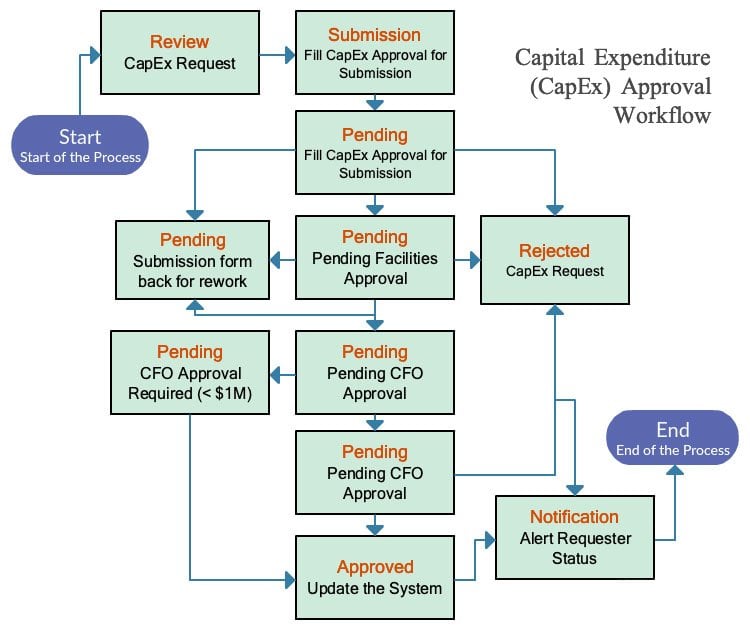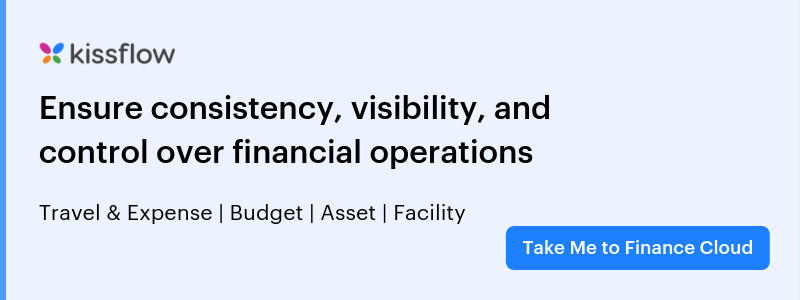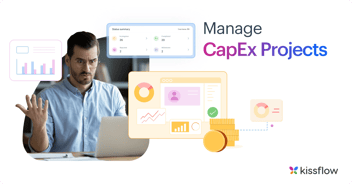The purchase of capital assets is the logical course of action when you start a business, or when the possibility of growth is on the horizon. Capital expenditures can often have a substantial impact on the short-term and long-term financial standing of the company. Once purchased, these expenses can’t be undone without the business incurring a loss.
These investing activities require a great deal of financial analysis and free cash flow because the initial costs of purchasing capital assets can be significantly high. A business needs to have its strategic goals, financial planning, budgeting, and an authorization process in place to make effective purchasing decisions.
What is Capital Expenditure (CapEx)?
Capital Expenditure (CapEx) refers to the funds used by a business to acquire, maintain, and upgrade fixed assets. These might include property, plant, and equipment (PP&E) like buildings, machinery, and office infrastructure. These are usually long-term assets that have a useful life or a productive purpose lasting longer than one accounting period.
Operational Expenditure (OpEx) on the other hand, are the operating expenses incurred by the company to run its day-to-day operations. This includes rent, utilities, internet, and salaries.
Features of Capital Expenditures
- Defining features of capital expenditures is longevity
Capital Expenditure Examples
CapEx refers to the funds used by businesses to acquire, maintain, and upgrade fixed assets. These might include plant, property, and equipment (PP&E) like buildings, machinery, and office infrastructure.
Types of Capital Expenditures:
Capital expenditures are a long-term investment, meaning the assets purchased have a useful life of one year or more. Two types of capital expenditure listed below,
- Funds required to maintain the operational levels of the existing assets
- Funds required to enable future growth
All amounts spent by a business up to the point the asset is ready are termed capital expenses. For example, the freight, the excise duty, and the installation fee add to the cost of the machinery.
Though the term CapEx is commonly used for physical assets, intangible assets like patents can also be considered CapEx because they improve the book value of the company. They’re considered capital assets since they can be sold when such a need arises.
CapEx Examples
- Office buildings
- Land
- Equipment and machinery
- Computers
- Furniture
- Vehicles
- Licenses
- Patents
- Copyrights
A purchase is recorded as an expense in some cases because of two reasons: for tax deductions or to cut down record-keeping expenses. Most businesses have a capitalization limit to decide if a purchase counts as a fixed asset. Whenever expenses exceed the capitalization limit, it’s recorded as a capital expenditure.
Taking the case of the purchase of a stapler that costs $10. Its lifetime easily goes over a year but it makes little sense to record it as a fixed asset and have the accountants depreciate the stapler. Due to its lower monetary value, it’s administratively easier to record this as an office supplies expense in the income statement.
In general, an expense incurred to increase the revenue-generating capacity or reduce the cost of production can be considered a capital expenditure. They have a quality of permanence and have a useful life or a productive purpose spanning more than one accounting period.
How to Account for Capital Expenditure
The term capital expense is a misnomer, from an accounting standpoint. It’s recorded as a capital asset rather than as an expense. Over the useful life of the asset, the costs are charged to the expense account as depreciation.
For example, a company purchases machinery worth $40,000, and records it in the asset account of the balance sheet. As the machine ages, its value starts declining which is measured by the depreciation. At the end of each accounting year, this reduced value is reflected by the depreciation expense in the financial statement.
Capital expenditures can be calculated from the Cash Flow Statement and the P/L statement. The current PP&E is the PP&E expenses from the previous accounting year summed with the capital expenditure minus the depreciation. Hence the CapEx formula is:
CapEx = PP&E (current period) – PP&E (prior period) + Depreciation (current period)
Capitalization Limit
There’s a record-keeping cost associated with capital expenditures. So, businesses often have some leeway to decide what counts as a fixed asset. It’s better understood by taking the case of the purchase of a stapler. Its lifetime easily goes over a year and it costs, say, $10.
It makes little sense to record it as a fixed asset and have the accountants depreciate the stapler. Due to its lower monetary value, it’s administratively easier to record this as an office supplies expense in the income statement.
For something to be classified as a capital expenditure, there has to be a quality of permanency to it. Most businesses have a capitalization limit to decide if a purchase counts as a fixed asset. Whenever expenses exceed the capitalization limit, it’s recorded as a capital expenditure.
How to Manage Your Capital Expenditure
The cost of capital assets are upfront, but the benefits are spread over many years in the future. This makes it difficult to identify and measure the usefulness of capital assets quite complicated. Here are a few things every business should consider before making any high-cost investment:
1. Budget
Before the purchase of plant, property, and equipment, the stakeholders must decide on the maximum amount they can spend. The scope of the asset has to be established and the availability of funds has to be taken into account.
2. Profitability
Though businesses invest in equipment and machinery to improve efficiency and productivity, it boils down to profitability in the end. These profits are realized either by an increase in sales or a decrease in the operating costs. Businesses should consider the sustainable returns they’d gain from purchasing capital assets.
3. Intangible Returns
There are a few intangible returns that companies gain from CapEx. The morale boost after the company purchases a new pool table can’t be quantified on the company’s cash flow statement. Also, owning assets improves the goodwill and the financial health of the company. The business has to consider such unquantifiable returns as well.
Capital Expenditure Approval Process Flow
In larger enterprises, the CapEx approval process can span several individuals, even departments. This ensures that all capital assets are deliberated upon and not under- or over-invested.
On the other hand, it also makes more room for miscommunication and manual errors that can prove costly. In order to ensure that CapEx decisions are well thought out, a transparent and streamlined approval process needs to be in place.

Every business has unique requirements when it comes to CapEx approvals. From the capitalization limit to the approval hierarchy, a lot can change. Using workflows to handle CapEx approvals can eliminate acquisition delays and improve accuracy.
Benefits of Automating the CapEx Approval Workflow
You wouldn’t need the CEO’s approval for purchasing a copier in one of your many branches, would you?
When you use workflows to handle CapEx approvals, it opens up multiple doors for automation. Here are some advantages of automating the CapEx flow
- Shorter approval and acquisition cycles
- Streamline and standardize CapEx processes across different branches
- Eliminate manual errors
- Comply with organizational policies
- Comprehensive audit trail
Automate Your CapEx Approvals with Kissflow Finance
The CapEx process is crucial to any organization and requires careful scrutiny at every step of the approval workflow. With Kissflow Finance & Ops Cloud, you can ensure that everyone is on the same page, and that all individuals in the approval process have up-to-date information.
You can identify where processes are hung up, and shorten your CapEx approval cycles. Take Kissflow Finance for a spin and see how it makes the entire process a breeze. Get started with the Kissflow Platform and learn how to leverage its features to drive better results















